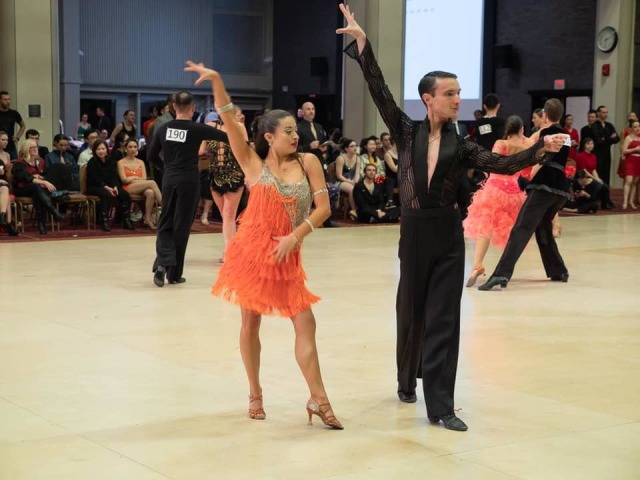Ballroom dance is a set of partner dances, which are enjoyed both socially and competitively around the world. Because of its performance and entertainment aspects, ballroom dance is also widely enjoyed on stage, film, and television.
Ballroom dance may refer, at its widest definition, to almost any recreational dance with a partner. However, with the emergence of dance competition two principal schools have emerged and the term is used more narrowly to refer to the dances recognized by those schools.
Modern ballroom dance has its roots early in the 20th century, when several different things happened more or less at the same time. The first was a movement away from the sequence dances towards dances where the couples moved independently. This had been pre-figured by the waltz, which had already made this transition. The second was a wave of popular music, such as jazz. Since dance is to a large extent tied to music, this led to a burst of newly invented dances. There were many dance crazes in the period 1910–1930.
The third event was a concerted effort to transform some of the dance crazes into dances which could be taught to a wider dance public in the U.S. and Europe. Here Vernon and Irene Castle were important, and so was a generation of English dancers in the 1920s, including Josephine Bradley and Victor Silvester. These professionals analysed, codified, published, and taught a number of standard dances. It was essential, if popular dance was to flourish, for dancers to have some basic movements they could confidently perform with any partner they might meet. Here the huge Arthur Murray organisation in America, and the dance societies in England, such as the Imperial Society of Teachers of Dancing, were highly influential. Finally, much of this happened during and after a period of World War, and the effect of such a conflict in dissolving older social customs was considerable.
Later, in the 1930s, the on-screen dance pairing of Fred Astaire and Ginger Rogers influenced all forms of dance in the U.S. and elsewhere. Although both actors had separate careers, their filmed dance sequences together, which included portrayals of the Castles, have reached iconic status. Much of Astaire and Rogers' work portrayed social dancing, although the performances were highly choreographed (often by Astaire or Hermes Pan) and meticulously staged and rehearsed.

